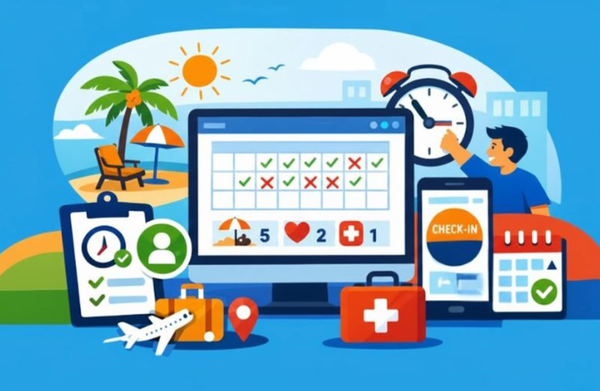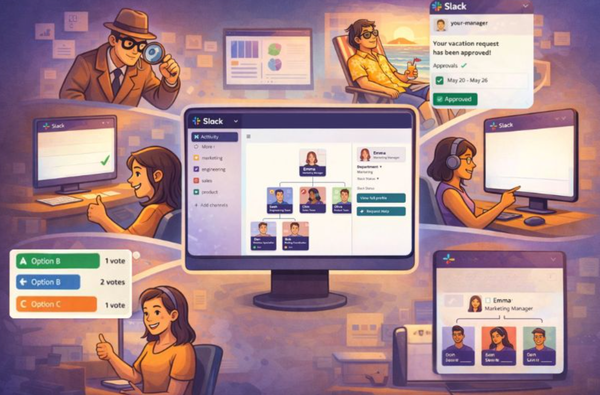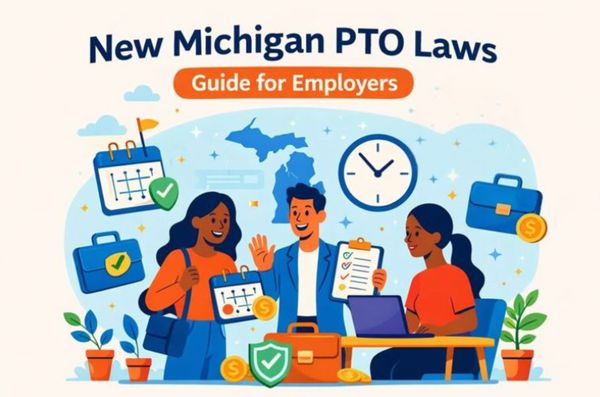6 Time Off Request Email Examples & Templates You Can Copy
Learn how to write a professional vacation or time-off request email with ready-to-use templates for vacation, sick leave, emergencies, and more—plus an easier alternative with Palmy Vacation for Slack.
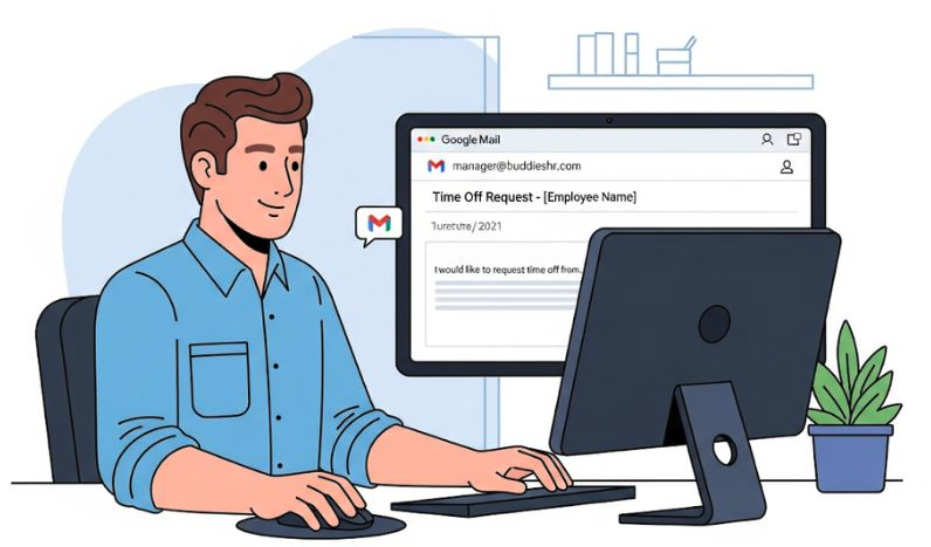
Whether you’re a worker who wants to formally request vacation leave for personal reasons, or a People Ops team member that’s been tasked with writing vacation request templates for your company, the challenge remains the same - what exactly should you say in the email?
With this BuddiesHR guide, you’ll learn to draft professional communication for paid vacation days and other leave requests. Use our templates to streamline the leave request process (People Ops) or increase the chances of getting leave approved (employees). Get started here 👇
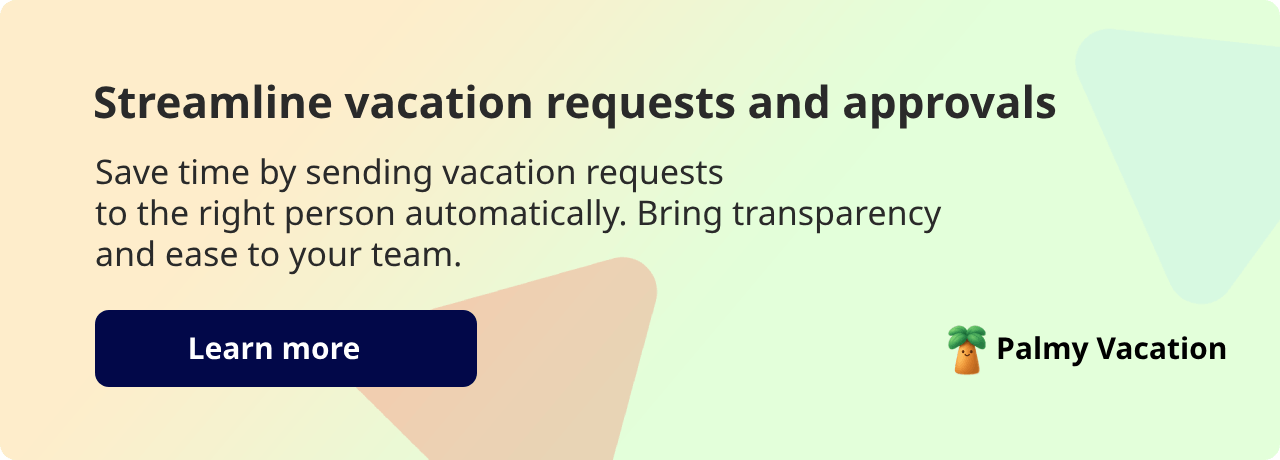
Quick Overview
A time-off request email is a professional message that employees send to their manager to request leave on specific dates. It should include the reason, exact dates, and a brief plan for covering responsibilities. Keeping it clear, polite, and timely increases the chance of approval.
Table of Contents
- Is a vacation request email necessary?
- Key elements of a time off request email
- Leave request email templates
- An alternative to leave request emails for HRs and managers
- Conclusion
- FAQs
Is a vacation request email necessary?
Yes, even in a workplace without a clear process, formally request time off for the following reasons:
- An email provides a record of your request for paid time off.
- A vacation time request shows that you are respectful and aware of the impact your absence could have on your team.
- An email clears up any confusion around dates and the number of days you need to take.
- A polite, well-structured email increases the chance of approval.
Vacation leave is a company benefit, and therefore, you should signal your intent to use such a benefit with as much advance notice as possible. Let your company’s vacation policy guide you on what you can request (if you have one). If no company policy exists, check if your employment contract details paid vacation time.
Key elements of a time off request email
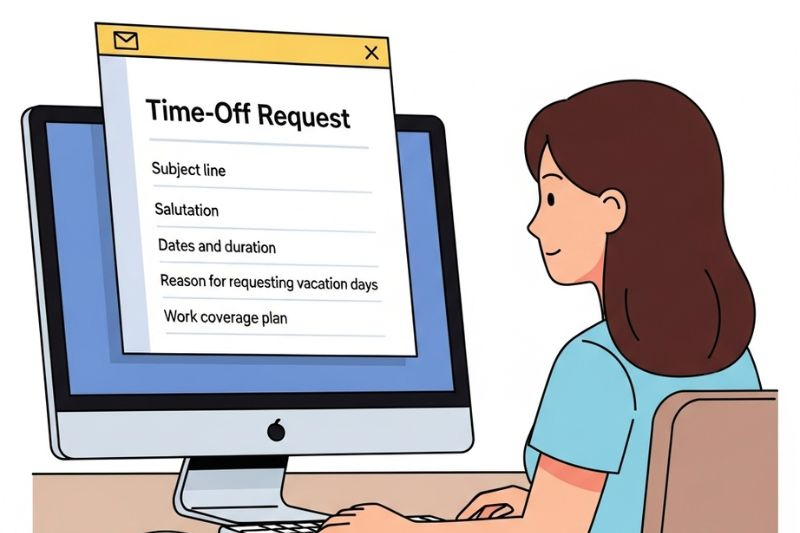
Before jumping into templates that you can use right now, here are the core elements of a formal request for leave. Use these elements whenever you have an email to write, and you’ll be on the right track.
- Concise Subject line: Keep it short and to the point.
- Salutation: Address your manager or HR person respectfully.
- Dates and duration: Be specific about the dates, provide a start date and an end date. Also include the number of days you want to take.
- Reason for requesting vacation days: This is not always necessary - it depends on the type of leave. E.g., if you need to leave immediately for an emergency, your manager will need to know it’s a valid reason.
- Work coverage plan: Briefly explain how (and by whom) your work will be handled while you’re gone.
- Closing statement: Briefly thank your manager or HR person, and invite them to discuss if needed.

Leave request email templates
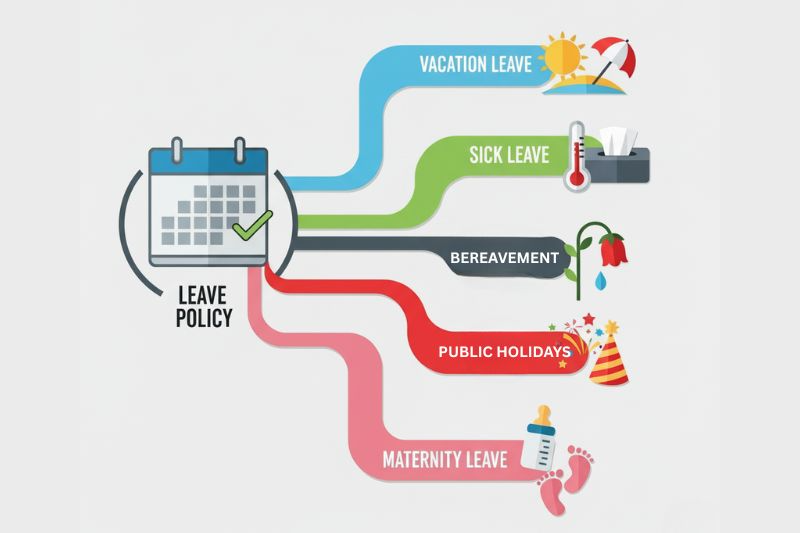
1. Request vacation time
Creating a healthy work-life balance is important for everyone. Use this template when you need time off for relaxation and to recharge your batteries.
2. Single-day leave request
If your company’s PTO policy allows for single days off, and you can take them for any reason, then use this template to draft a polite email explaining why you need time off.
3. Half-day leave request
Sometimes you need a half-day off for a personal appointment, or even a medical appointment. Write this email in a professional tone, but keep it concise.
🧑💼Managers: Are you spending too much time managing vacation requests? Find out how you can streamline the process and avoid headaches.
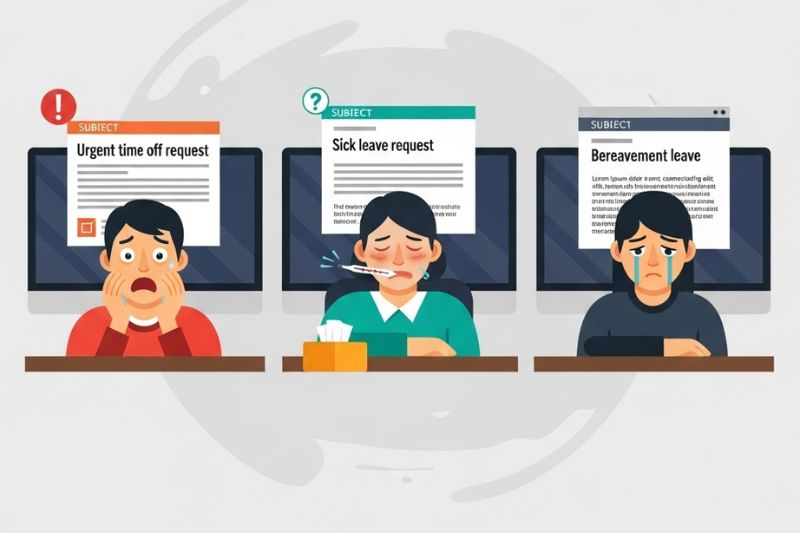
4. Emergency leave request
Emergencies are unavoidable, so when you have one to attend to, let your manager know immediately. You should still write a request email, even if you’ve discussed it with them verbally.
5. Sick leave email
When you are indisposed, you should let your manager (or HR) know as soon as you can. It is common for employers to lay out stipulations about sick leave in the employee handbook (including the responsibility to notify).
6. Bereavement leave
Most companies offer some form of leave when an immediate family member or close relative has passed. Send an email to your manager to advise of your absence as soon as you are aware that you need time off.
An alternative to leave request emails for HRs and managers
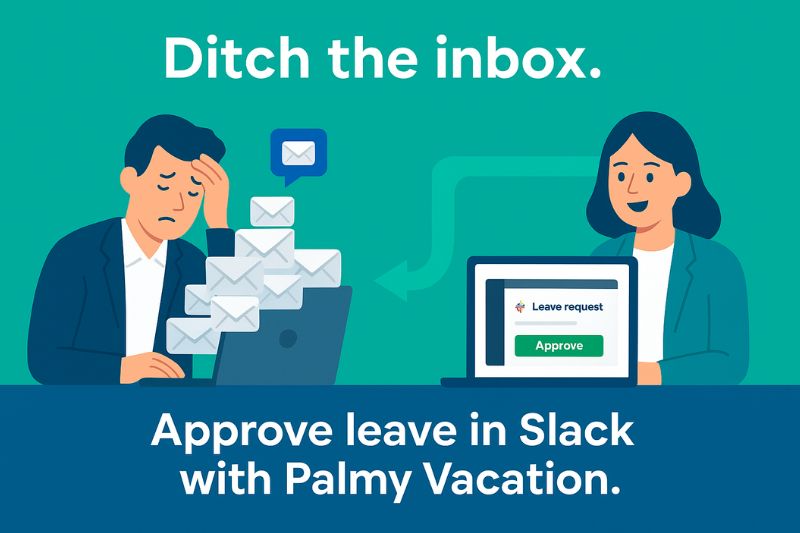
Why are forward-thinking companies moving away from traditional leave request emails and embracing automation? Because they’re tired of trying to manage the leave process manually, while missing communication, and spending hours on spreadsheets.
There’s a better solution, and it’s called Palmy Vacation - a Slack integration that automates your entire process where your employees already spend all their time.
Instead of drafting emails, employees simply submit their leave requests in Slack. Managers receive instant notifications, can approve or deny requests with a single click, and have full visibility into team schedules—all without leaving the app. Palmy provided benefits that emails can’t match:
- Instant approvals: No more searching through email chains—requests and approvals happen in real time.
- Centralized tracking: All leave records are automatically stored and easily accessible, eliminating spreadsheets.
- Transparency for teams: Everyone can see who’s out and when, reducing scheduling conflicts.
- Time savings: HR and managers reclaim hours every week by cutting out repetitive admin work.
- Effortless adoption: If your company already uses Slack, Palmy Vacation integrates in minutes with no steep learning curve.
🚀 If you’re ready to leave email templates behind, connect Palmy Vacation to Slack now.

Conclusion
A well-drafted and professional email will help your manager to approve your request timeously and get insight into why you need some time from work. How you structure your email depends on the type of leave you are requesting and the company’s rules around paid time off.
Standardised templates are a great way to streamline the leave request process for HRs, but an even better alternative is automation. This can be achieved by using a vacation tracker such as Palmy Vacation, developed for Slack integration by BuddiesHR.
Frequently Asked Questions
1. How do you say time off professionally?
You can say “leave” or “paid time off (PTO)” professionally, rather than simply “time off.” Other formal alternatives include “annual leave,” “vacation leave,” “sick leave,” or simply “requesting leave.” The phrasing depends on the context and your company’s policy.
2. How far in advance should I request time off?
Most workplaces prefer as much notice as possible for planned time off, but a common standard is two weeks' notice. For an extended leave (+three weeks), a request should be sent at least a month before your departure.
3. Am I obliged to provide a reason for personal time off?
Not always - vacation requests don’t require an explanation. However, if you need to leave at short notice, or in an emergency, you will need to supply a reason.
4. What can I do if my leave request is denied?
Always stay professional and request alternative dates. If you can compromise, then do so. If not, explain the reasons for this clearly and honestly to your manager in a follow-up email. They may have concerns (like project deadlines) you’re unaware of.


